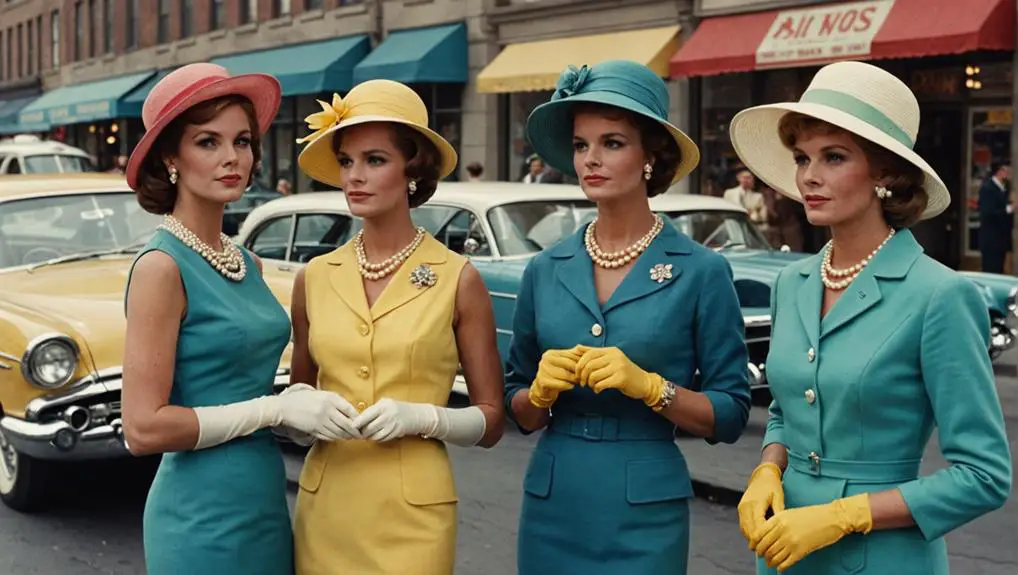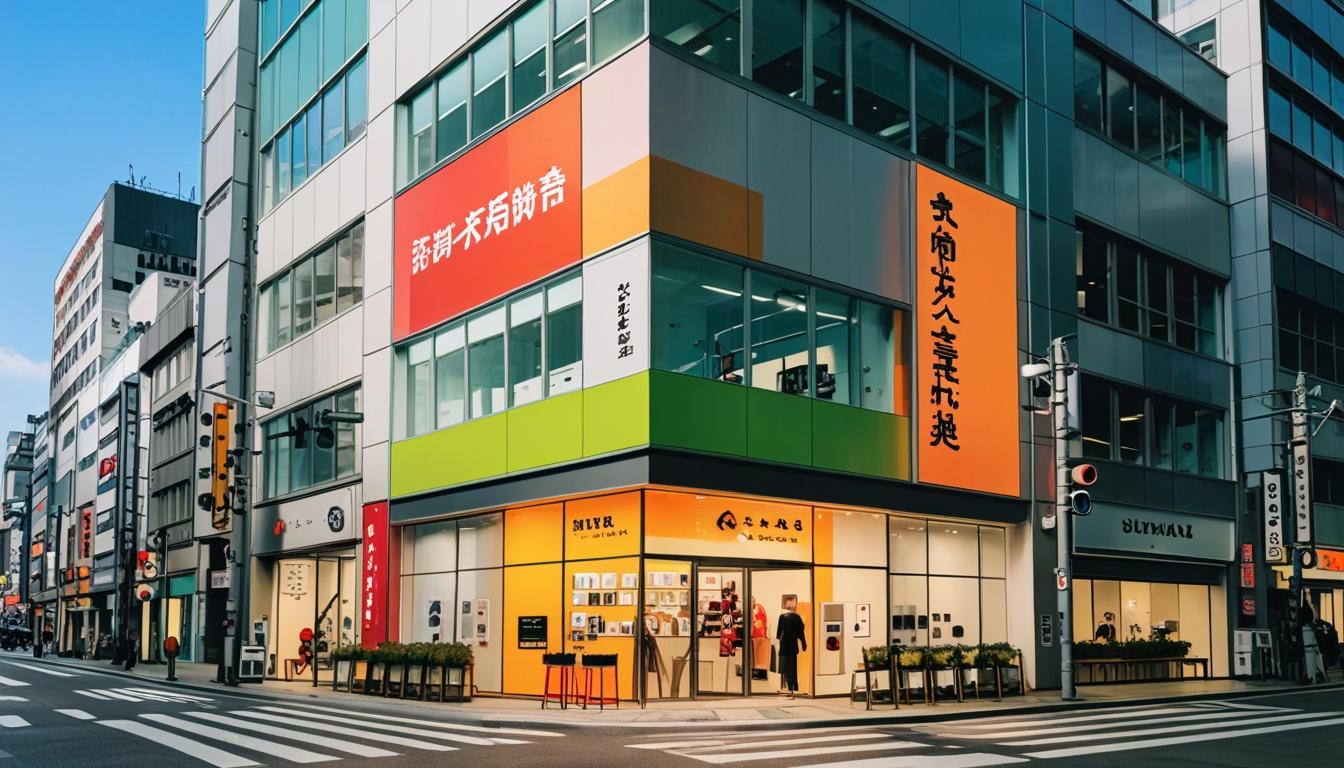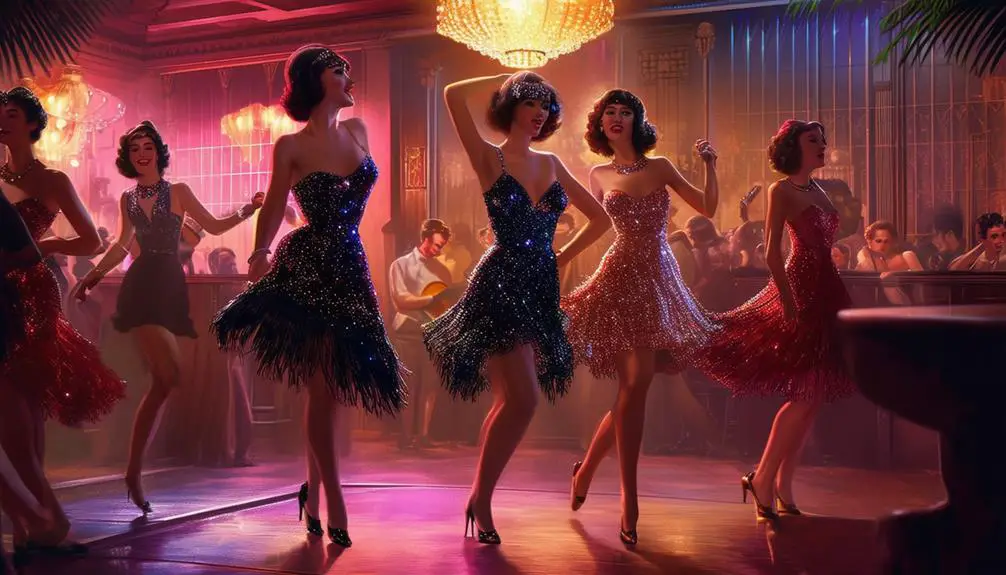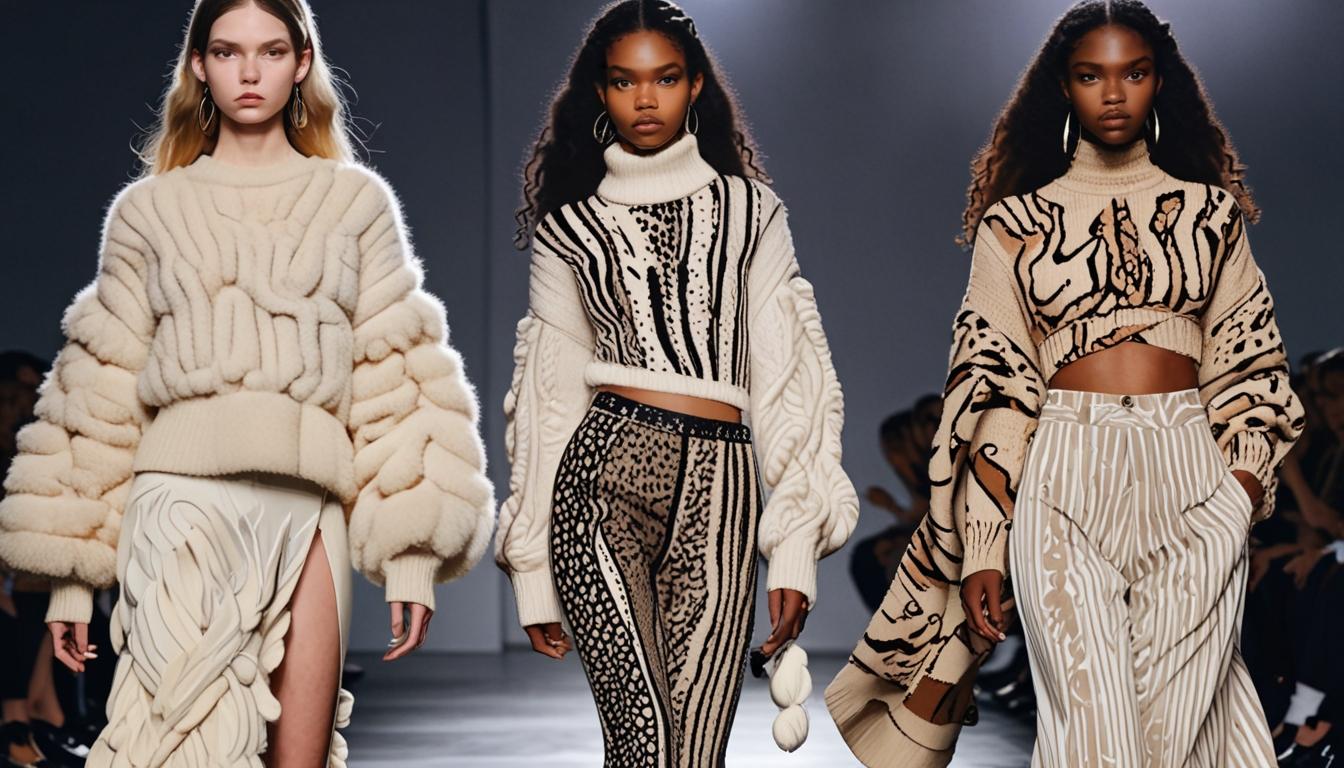In the 1960s, women's gloves evolved from symbols of refinement to reflections of cultural upheaval. Initially, long opera gloves and stylish leather designs conveyed sophistication at social events. Yet, as youth culture emerged, casual wear took precedence, diminishing the appeal of formal accessories. The gloves that once adorned elegant outfits became overshadowed by denim and unstructured styles. This shift highlighted a broader societal change, as women sought practicality and self-expression through fashion. Vintage gloves now capture a nostalgic elegance that remains cherished. There's much more to explore about this iconic fashion era and its impact on today's styles.
Historical Significance of Gloves
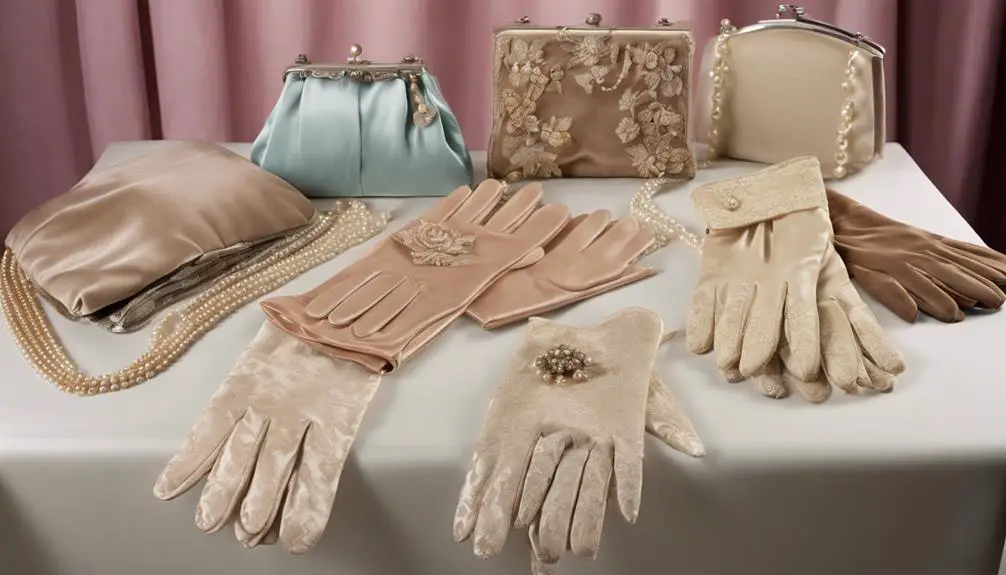
When you think about the 1960s, it's easy to overlook the significant role gloves played in shaping women's fashion and social identity during that era. Vintage dress gloves were more than mere accessories; they symbolized class, sophistication, and adherence to social etiquette. As you explore this decade, you'll notice the variety of glove styles—ranging from long opera gloves to chic short dress gloves—mirroring the evolving fashion norms of the time.
In the mid-20th century, gloves reached their peak significance, becoming essential for women attending social events. They were crafted from diverse materials like leather, nylon, and synthetic fabrics, catering to various fashion preferences. This accessibility made gloves a staple in any woman's wardrobe, enhancing her outfit while conveying a sense of refinement.
However, as the late 1960s approached, the cultural landscape began to shift. The youth culture's rebellion against traditional norms led to a decline in glove-wearing, reflecting a broader move toward casual fashion. Nonetheless, the embellishments and unique designs of gloves during this period capture the creativity of the era and the influence of iconic designers, marking a fascinating chapter in fashion history.
Fashion Trends of the 1960s
The 1960s marked a radical departure from the polished elegance of the previous decade, as fashion began to reflect the vibrant spirit of youth culture and social change. You'd notice a significant shift from the traditional white gloves that symbolized sophistication in the 1950s to a more casual and rebellious street style. Iconic designers like Courrèges and Bill Blass paved the way for modern designs, appealing to younger demographics with unstructured outfits and miniskirts that challenged conventional femininity. Additionally, vintage clothing labels from this era often reflect the evolving trends and social sentiments, showcasing unique designs and craftsmanship that resonate with collectors today. As discussed in vintage clothing trends, the labels serve as an essential element in identifying the authenticity and era of these fashion pieces.
As the decade progressed, new materials like plastics and synthetics emerged, influencing not just clothing but accessory styles too. Vintage gloves evolved alongside this trend, shifting from classic styles to bold, colorful, and experimental designs that mirrored the playful spirit of the time. The rise of leather bell-bottoms and paper minidresses illustrated a growing acceptance of disposable fashion, prompting a reevaluation of traditional fashion norms.
The cultural commentary of the era was starkly visible, contrasting a traditional wedding dress with disposable paper dresses, symbolizing rapid shifts in societal attitudes. This evolution in fashion showcased a dynamic interplay between personal expression and cultural identity in a transformative decade.
Iconic Styles and Designs
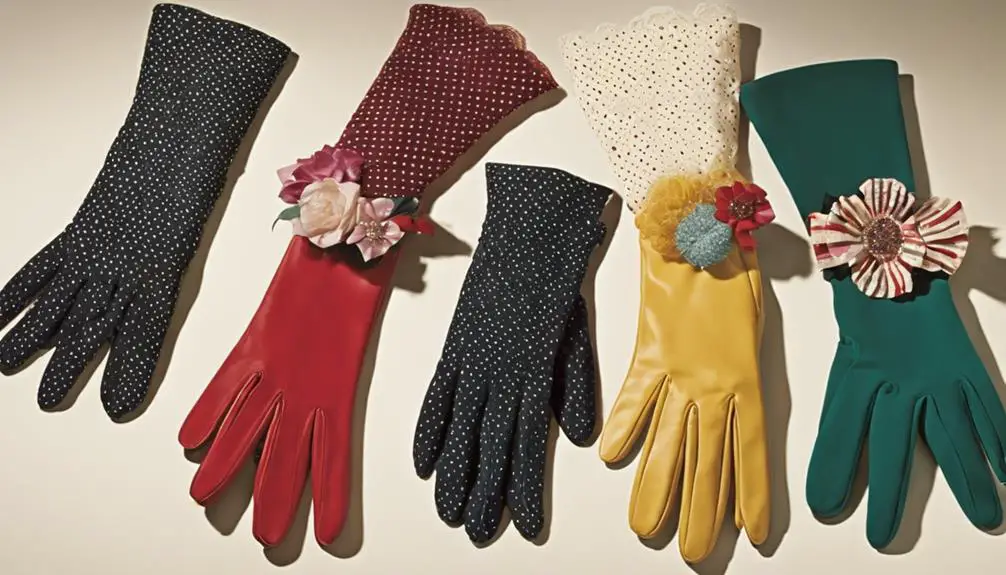
Throughout the 1960s, a diverse array of iconic glove styles emerged, each reflecting the decade's bold spirit and evolving fashion landscape. One standout was the trendy black leather gloves, often beaded and measuring 15 inches in length. These gloves not only exuded modernity but also captured the essence of the era's style revolution. Long opera gloves, particularly in off-white, added a touch of sophistication, with pearl-like buttons enhancing their elegance and contemporary appeal.
You'd also notice fingerless satin gloves embellished with Czech crystals making waves, embodying a playful yet glamorous approach to fashion accessories. Meanwhile, the introduction of faux leather gloves democratized style, allowing many to embrace chic designs without the hefty price tag.
Vintage leather driving gloves emerged in vibrant hues, such as magenta with tan crochet, epitomizing the era's willingness to explore bold and unconventional designs. These various styles collectively showcase how the 1960s not only shaped women's fashion but also encouraged self-expression, turning gloves into essential statements that completed any outfit. Each piece tells a story of transformation and daring creativity in a time of change.
Social Changes Affecting Fashion
As iconic styles like long opera gloves and fingerless satin variations gained popularity, the broader social changes of the 1960s began reshaping fashion in significant ways. The decade marked a shift from formal attire to casual wear, propelled by the vibrant youth culture and movements advocating for civil rights and anti-war sentiments. Young men and women embraced a rebellious spirit, opting for practical clothing like denim and pants, which effectively diminished the role of gloves in everyday outfits.
The women's liberation movement further fueled this transformation, as traditional fashion norms faced rejection. Vintage gloves, once symbols of elegance and propriety, began to lose their charm, signifying a broader resistance to established fashion hierarchies. Instead, unstructured designs and street fashion, such as leather bell-bottoms and micro miniskirts, emerged, overshadowing the formality that gloves represented.
Driving gloves, once a staple of sophistication, became less relevant as informality took precedence, reflecting society's evolving values. As gloves shifted from essential accessories to impractical items, the era's cultural commentary underscored a significant move towards self-expression and a relaxed approach to style.
Decline of Formal Accessories
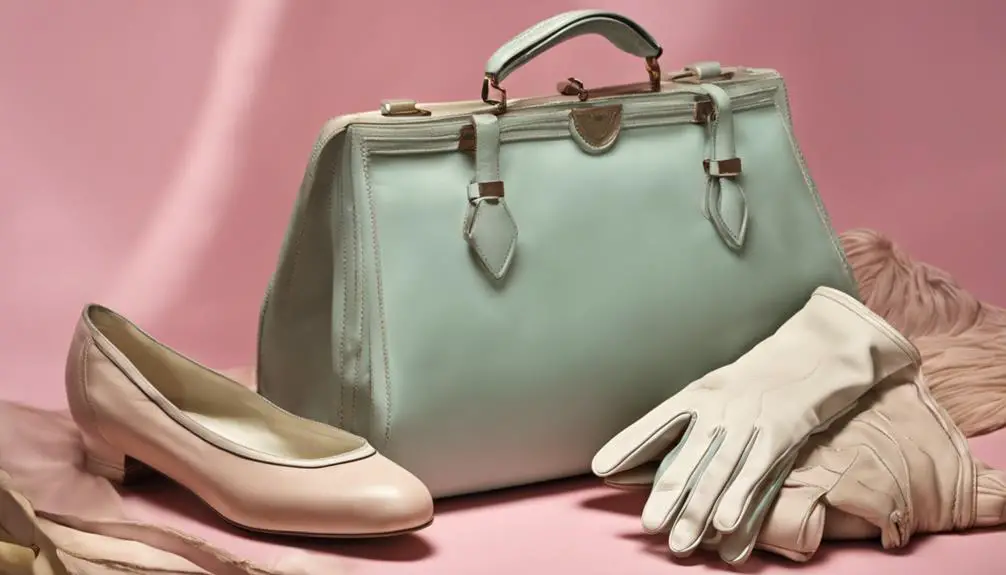
In the 1960s, the decline of formal accessories, particularly gloves, marked a pivotal shift in fashion sensibilities. As youth culture emerged, both men and women began to reject traditional norms in favor of casual and rebellious styles. With social movements such as civil rights and anti-war protests gaining momentum, fashion became a canvas for self-expression and practicality overshadowed formality.
Women increasingly favored unstructured and comfortable clothing designs, which often didn't pair well with the rigid formality of gloves. The rise of street fashion, characterized by leather bell-bottoms and micro miniskirts, further diminished gloves' role as essential accessories. Instead of complementing outfits, gloves would feel out of place against this backdrop of liberation and informality.
Vintage Gloves Today
Vintage gloves are experiencing a renaissance, enchanting collectors and fashion enthusiasts alike with their distinctive styles and rich history. Today's market highlights the quality and craftsmanship of these accessories, showcasing unique designs that often surpass contemporary fashion. You'll find leather opera gloves, which can fetch prices up to $138, alongside more affordable cotton gloves starting at $6.99, making it easier for you to indulge in vintage elegance without breaking the bank.
The 1960s serve as a focal point for many collectors, as that decade introduced mod styles and innovative materials like faux leather. These gloves reflect the era's fashion evolution and cultural shifts, offering a tangible connection to a time when gloves were essential for any occasion. With local pickup options and shipping costs typically ranging from $4.25 to $8.50, vintage gloves are accessible to a broader audience, allowing you to investigate this nostalgic accessory trend.
As you explore this world, you'll appreciate not just the aesthetic appeal but also the intricate craftsmanship that defines each piece, revealing the artistry that's often lost in today's mass-produced fashion landscape.
Nostalgia for Past Elegance
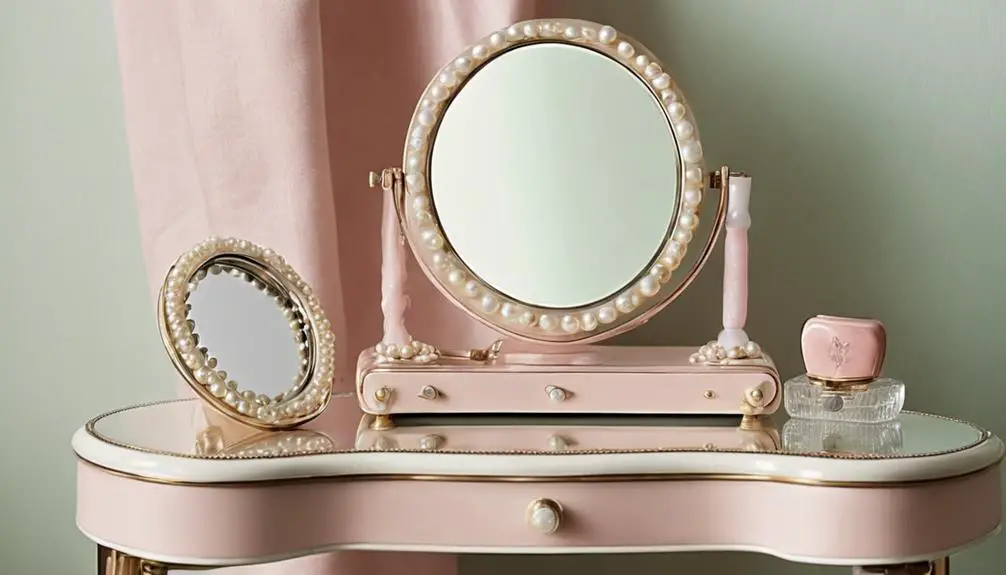
Nostalgia for past elegance often surfaces in our appreciation for fashion artifacts that define previous eras, particularly the striking gloves of the 1960s. As youth culture emerged and anti-fashion sentiments took hold, the once-cherished gloves began to fade from everyday life. Yet, those vintage pieces evoke a longing for the sophistication they represented.
Consider the allure of 1960s gloves, which often featured:
- Soft leather that molded beautifully to the hand, offering both comfort and style.
- Innovative designs, including embellished details that added a modern twist to traditional elegance.
- Long opera gloves that symbolized class and formality, now viewed as relics of a more refined time.
- The craftsmanship of brands like Van Raalte, known for their intricate designs and quality materials.
These gloves encapsulate the societal values of mid-20th century fashion, reminding us of a time when elegance was paramount. Collectors and enthusiasts cherish these artifacts not just for their aesthetic appeal but as symbols of a bygone era, bridging the gap between the past and present, and inviting us to explore the elegance that once defined women's fashion.
Frequently Asked Questions
Why Did Ladies Wear Gloves in the 1950s?
In the 1950s, you wore gloves to showcase elegance and societal status. They complemented formal attire, symbolized femininity, and reflected meticulous grooming, aligning with the cultural expectations of sophistication during social gatherings and events.
What Decade Were Gloves Popular?
Gloves were especially popular in the 1950s and 1960s, symbolizing elegance and sophistication. As you explore fashion trends from these decades, you'll notice how gloves reflected societal norms and evolved alongside changing cultural attitudes.
What Year Were Fingerless Gloves Popular?
Fingerless gloves gained popularity in the mid-1960s, symbolizing youth rebellion and nonconformity. You'll notice their vibrant designs and practical features, reflecting a cultural shift towards bold fashion choices that allowed for both self-expression and ease of movement.
